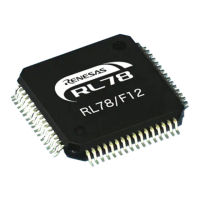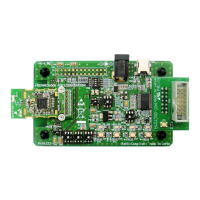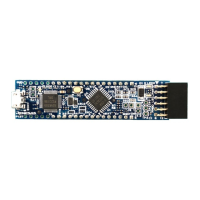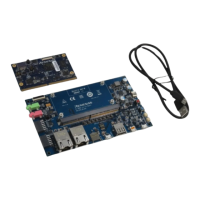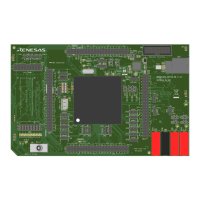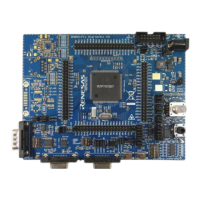RL78/F13, F14 CHAPTER 4 PORT FUNCTIONS
R01UH0368EJ0210 Rev.2.10 347
Dec 10, 2015
4.4.4 Connecting to external device with different potential (3 V)
It is possible to connect to an external device with a different potential (3 V) by changing EV
DD to accord with the power
supply of the connected device. In products in which EV
DD cannot be specified independently or if EVDD cannot be
changed to accord with the power supply of the connected device for some reason, I/O connection with an external device
operating on 3 V when the system is operating on V
DD = 4.0 V to 5.5 V is still possible via the serial interface by using
ports 1, 6, 7, and 12.
Regarding inputs, CMOS/TTL switching is possible on a bit-by-bit basis by the port input mode registers 1 and 7 (PIM1,
PIM7).
Moreover, regarding outputs, different potentials can be supported by switching the output buffer to the N-ch open-drain
(EV
DD tolerance) by the port output mode registers 1, 6, 7, and 12 (POM1, POM6, POM7, and POM12).
(1) Setting procedure when using I/O pins of UART0, UART1, CSI00, CSI01, CSI10, and CSI11 functions
(a) Use as 3 V input port
<1> If pull-up is needed, externally pull up the pin to be used (on-chip pull-up resistor cannot be used).
In case of UART0: P16
In case of UART1: P11
In case of CSI00: P16, P17
In case of CSI01: P13, P14
In case of CSI10: P11, P10
In case of CSI11: P70, P71
<2> After reset release, the port mode is the input mode (Hi-Z).
<3> Set the corresponding bit of the PIM1 and PIM7 registers to 1 to switch to the TTL input buffer.
<4> V
IH/VIL operates on 3 V operating voltage.

